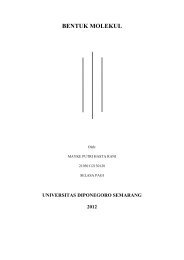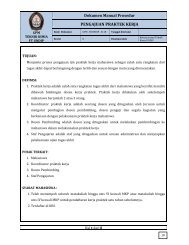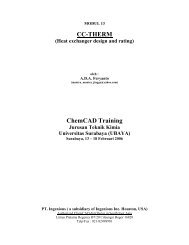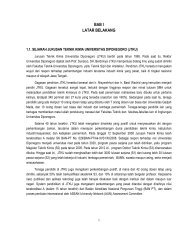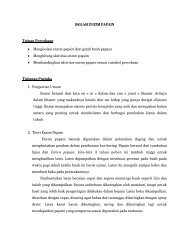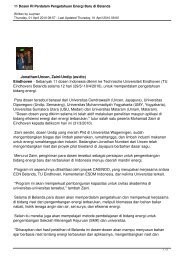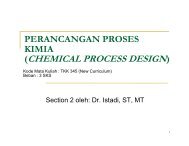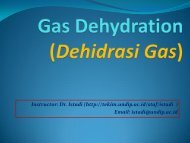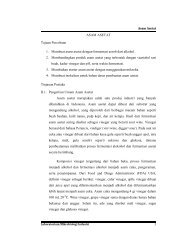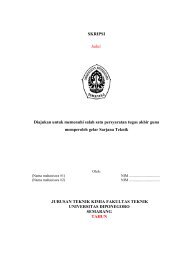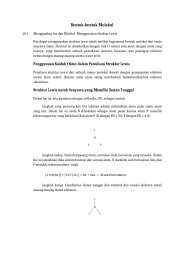Alkylation of Benzene by Propylene to Cumene 6
Alkylation of Benzene by Propylene to Cumene 6
Alkylation of Benzene by Propylene to Cumene 6
- No tags were found...
Create successful ePaper yourself
Turn your PDF publications into a flip-book with our unique Google optimized e-Paper software.
6.3 Reac<strong>to</strong>r/Separa<strong>to</strong>r/Recycle Structure 183k1 = 6510exp( −52564/ RT) (6.5)in which the reaction rate is given in kmol/m 3 .s and the activation energy in kJ/kmol. Table 6.6 enables an estimation <strong>of</strong> a first - order reaction constant for theDIPB formation as:k2 = 450exp( −55000/ RT) (6.6)The above kinetic equations have been tested <strong>by</strong> the simulation <strong>of</strong> an adiabaticPFR. For an inlet temperature <strong>of</strong> 160 ° C, a benzene/propylene ratio <strong>of</strong> 7 and aspatial time WHSV <strong>of</strong> 10 a <strong>to</strong>tal conversion <strong>of</strong> propylene may be reached withselectivity around 90%. In conclusion, the kinetic data corresponds <strong>to</strong> a fast industrialcatalyst and may be reasonably used in design.6.3Reac<strong>to</strong>r/Separa<strong>to</strong>r/Recycle StructureThe following reac<strong>to</strong>r performance in recycle is the aim: over 99.9% per/passpropylene conversion over 88% cumene selectivity, adiabatic temperature risebelow 70 ° C, but a maximum catalyst temperature <strong>of</strong> 250 ° C. The inlet pressureshould be sufficiently high <strong>to</strong> ensure only one liquid phase. Thermodynamic calculationsat 35 bar indicate bubble temperatures <strong>of</strong> 198 and 213 ° C for propylene/benzene ratios <strong>of</strong> 1/4 and 1/7, respectively (Figure 6.5 ). The reactive mixture canbe maintained as liquid up <strong>to</strong> about 250 ° C, since the concentration <strong>of</strong> propylenediminishes gradually <strong>by</strong> reaction.In a first attempt, we simulate the reac<strong>to</strong>r as an adiabatic PFR. We consider adiameter <strong>of</strong> 1.3 m and a <strong>to</strong>tal length <strong>of</strong> 7 m, which ensure propylene conversionover 99.9%. The feed consists <strong>of</strong> 100 kmol/h propylene at molar benzene/Figure 6.5 Reac<strong>to</strong>r residence time as a function <strong>of</strong> the molar benzene/propylene ratio.



